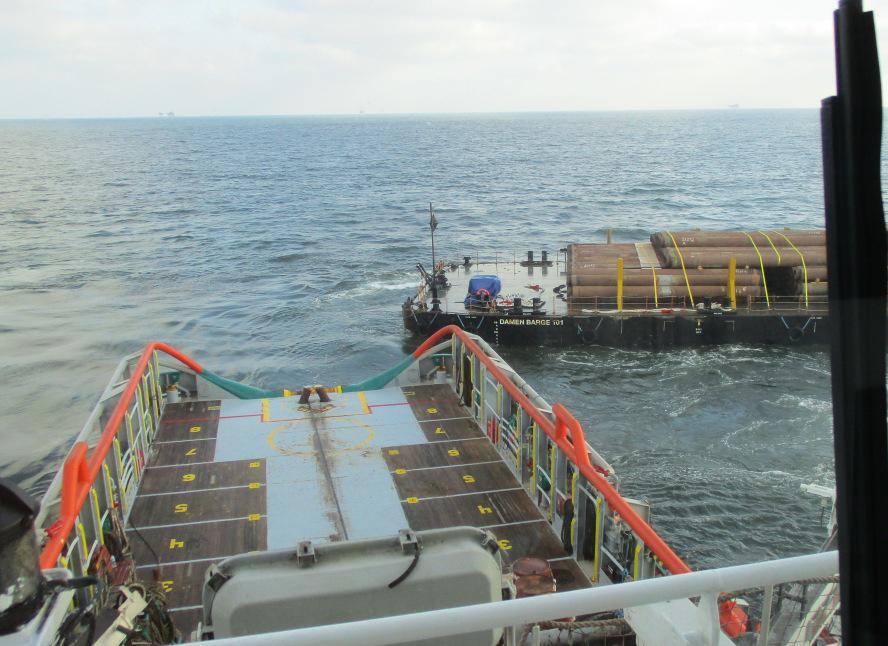Experience and safety, the keys to successful anchor handling
From August 24 to October 23, 2017, Bourbon Liberty 233 successfully carried out an anchor handling mission in Egypt. Gontran de la Souchère, Operations Manager, and David Astagneau, Captain of the vessel, describe the specifics of this type of operation.
Offshore of the port of Idku, not far from Alexandria, the BOURBON AHTS vessel provided support to a barge moored with eight mooring lines that was commissioned to lay several sections of pipeline, the main one being nearly 25 km in length.
Each anchor and each line had to be lifted and redeployed according to the progress of the barge laying the pipeline. This type of virtually uninterrupted lifting/redeployment operation for heavy equipment under tension is called an anchor handling maneuver.
“The reliability and operational excellence of the support vessel are crucial for this kind of mission,” said David Astagneau, who commanded Bourbon Liberty 233 during the operation. “Anchor handling is a maneuver that must be executed round-the-clock over a long period.” Gontran de la Souchère added: “Our role, and the challenge of this type of mission, is to enable our client to respect their deadlines. However, any incident or failure on our part could have serious repercussions not only on the activities of the barge, but also on the client’s entire project. We cannot allow this type of risk.”
" Our role, and the challenge of this type of mission, is to enable our client to respect their deadlines."Gontran de la souchèreoperations manager
PREVENTING THE WEAR OF EQUIPMENT AND CREW
With 7 to 15 lines lifted and redeployed daily depending on the barge’s rate of progress, nearly 600 line maneuvers were carried out by Bourbon Liberty 233 during a period of two months. “There is a risk of lowering our guard over time. Constant vigilance is necessary to avoid any type of incident,” explained the Captain. That is why having an experienced crew is a major asset: “The two alternating crews demonstrated unfailing skill and professionalism.”
Risk management is particularly important for this type of operation. The crew must be highly committed, trained and supported.
JACKLINES
Safety measures, including the clear deck policy1, were strictly applied. In addition, a specific device was installed to guarantee the safety of the seafarers on deck: life lines. “These are cables attached at the two extremities of the vessel, to which the seamen are attached,” said the Master. “We tested this device in the Gulf of Mexico and it proved effective in choppy seas and poor weather.”
Gontran de la Souchère added: “Due to the frequency of the operations and the duration of the mission, risk management requires the reinforcement of our usual safety measures, life jackets in this case. We have therefore decided to perpetuate the use of life lines, which guarantees optimal protection while allowing freedom of movement.”
These two months of operation were performed without incident or interruption, the fruit of a constant collective effort for the client’s greatest satisfaction.
1 Safety measure that requires that the deck be entirely cleared in anticipation of a load.



